Blog Archive
December 2022
1 December 2022
On Annotating Books
The other day the Reading Project gained a new follower. For those who don’t know, this website is hosted on Neocities, which allows other website owners on Neocities to ‘follow’ a site if they’re interested, much like in social media. In this case the follow came from a new website, mikegrindle.com. I don’t know the name of the site owner for certain, but I will assume it is Mike for convenience. He can let me know if I’m wrong.
I read through the website and discovered an article about the practice of annotating books. You can find that specific page here. Mike’s article advocates the practice of book annotation and makes a number of points that I have long argued, myself. When you’ve been reading long enough you inevitably have people comment on your reading practices from time to time. As an aside, just to give you some flavour, I was once waiting on a station for a train when I was told I was going to hell by a rather animated old lady, because I was reading Richard Dawkins’s The God Delusion. On another occasion, this time in a train, I had a young guy become suddenly aggressive as I sat and read, because my reading peacefully, it seems, sent a message to him that I thought I was better than him. I wasn’t aware he was next to me until it happened. So, when I say that people can have an opinion about me marginalising my own books, you should understand that while this is none of their business, it is not beyond the bounds of believability.
I personally don’t think annotating books is destroying books. I buy my own books and once I’ve read them it is unlikely anyone else in my family will read them, anyway. But that's not really my point. The marginalisations are sometimes useful when I need to look back in a book to find something. Books are to be enjoyed, and if making annotations in your own books is one way to do that, then I say that’s fine.
I started marginalising in high school for books I was studying, and continued the practice into university where I studied literature. For years after that, however, I stopped. But when we started the Reading Project in 2017, there were a few factors pushing that decision, and one of them was that I had read so much over the years, but my memory of many books was now rudimentary. When I was asked an opinion about the books I had read I found I could give one, but I was often pressed when asked to go into specifics. If I’d been writing reviews all those years, I realised, I’d have something to look back on. This is one of the points Mike makes in support of annotating books in his article. When we started the Reading Project, I began to annotate my books again, with the exception that if the book was what I considered especially beautiful or special – everyone will have their own standard for this – I’d make notes in an exercise book instead.
Mike suggests that annotating can be a great way for others, now or in the future, to see what you were thinking or receive other insights about the book or reader. Sure. But I wouldn’t expect much from my notes. I write nothing witty, thoughtful or insightful. I tend to underline or summarise a point in the margin, or sometimes I draw a little picture. My main reason for doing this is that I want to be able to find key quotes or moments in the story for reference when I begin to write a review. On a rare occasion, when I am having trouble getting my thoughts together, I use the notes I have made in my book to make a more systematic set of notes with page numbers on my computer. Another reason to annotate, is that it also helps me concentrate and think. Mike is right when he says that the act of annotating slows you down and makes you think more about what you’re reading.

Mike uses a couple of interesting examples to show the value of annotations from famous writers, so I thought I’d add one other. A few years ago I purchased a beautiful edition of Shakespeare’s Beehive by George Koppelman and Daniel Wechsler. Their book is about an Elizabethan dictionary they purchased on eBay, an annotated copy of Baret’s Alvearie. Their theory is that the copy they have was personally owned and annotated by William Shakespeare, himself. I don’t think there is any way of knowing that for certain, but they produce some interesting evidence, and of course if the book is more than likely Shakespeare’s it offers further insights and areas for study of Shakespeare’s work. There’s a website for the book which you can find by clicking here.
In other news, my copy of the Booker Prize winner, The Seven Moons of Maali Almeida by Shehan Karunatilaka is finally on its way to me this morning. My son, who is in Melbourne at the moment, teasingly sent me a picture of a shelf full of copies of the book in a Melbourne bookstore. I haven’t been to Sydney for two weeks, so who knows, the bookstores there may also have it, by now. It doesn’t matter. I may start another book today, which would push back my reading of Karunatilaka’s book a little. Or I may not. It’s a cool day here in the Mountains for the first day of Summer and I have nothing I have to do today. It’s a good day to relax.
- bikerbuddy
6 December 2022
Look what happened while I shopped for Christmas!
My wife asked me to go with her to Sydney today to help select books as part of our family’s Christmas presents. I did my duty, but I have to say that this shows it was not my fault I was put in the way of temptation.
I’m in the middle of the Booker Prize winner at the moment, The Seven Moons of Maali Almeida by Shehan Jarunatilaka, but I also started reading Evelyn Waugh’s Vile Bodies at the same time. My copy is a small hardback edition I’ve had sitting on my shelf for a long long while, so that’s what accompanied me on our train ride this morning. I don’t know why it’s taken me this long to read it, since I loved Scoop (read while I was a teacher), A Handful of Dust (read at university) and The Loved One (read while I was in high school). It must be forty years since I first read The Loved One, but it still sits in my mind. I’m tempted to go back to it sometime. Waugh’s humour suits my own.
Further to the request to help select books and my currently reading Waugh, is the matter of a chance meeting at the train station this morning with an old colleague from teaching. He happened to mention watching Brideshead Revisited as we talked, which I have not read. You know how these things go, even if you’re a rationalist. It seemed fated.
So, Brideshead Revisited and Decline and Fall ended up in the book haul, along with George Saunders’s new collection of short stories, Liberation Day. No justification by the hand of fate for that one, I’m afraid. Sometimes I just have to admit that I wanted it.
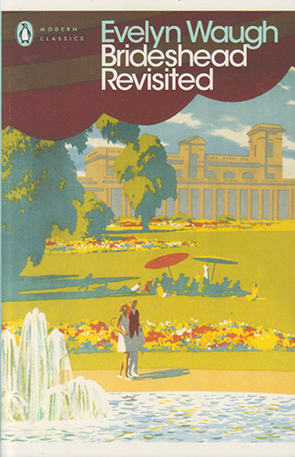
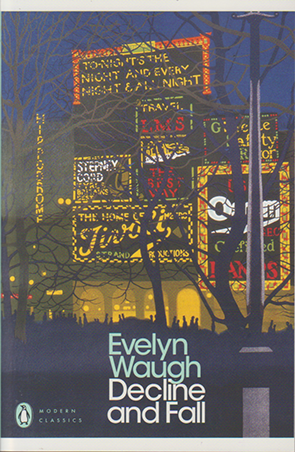

- bikerbuddy
7 December 2022
On US editions and Book Prices in Australia
I mentioned in my December 1 post that other website owners who use Neocities to host their website can ‘follow’ other websites. That is not all. We are also able to make comments to one another on our profile pages.
After I published my blog post yesterday, Mike, who has reviewed for this site as ‘Hasty’ and owns the No Happy Nonsense website, and publishes Ear Rat Magazine, commented again on Reading Project’s profile about his disappointment with American book covers, compared with ‘international’ covers. I have a prejudice against American covers, too, and I thought I’d explain that a bit more.
But first, I have to say that having looked at some book vloggers on YouTube, I think a lot of American books are actually pretty nice. I think Mike was expressing disappointment in the cover designs, themselves. And of course, I do own many American published books which I like. My prejudice arises against what I think of as the US mass market paperback. The editions I’m thinking of are small, the paper quality is poor, as is the printing, and their production seems to have little regard for the novel as a creative work. What you’re buying with these books is a product meant for ‘consumption’.
I took a quick scout about my bookshelves this morning and only found two of these kind of US publications (I try to avoid them). The first is an edition of Terry Brooks’s The Sword of Shannara, which I bought and read in high school. It actually has some black and white illustrations and a foldout colour portrait of the group of nine led by Allanon the druid (yes, an unabashed Lord of the Rings rip-off). But the book has a stiff spine and to this day is difficult to hold open and read. The second book I found was Gregory Maguire’s Wicked. When I became interested in Wicked it was difficult to find copies in Australia. All I found was the US mass market edition I now own.
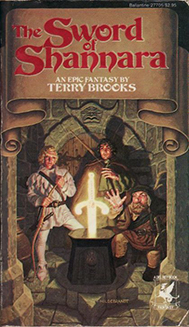
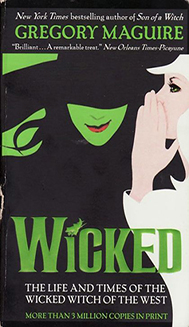
Of course, shortly after I bought it Wicked was given a very attractive cover and quality production by a non-US publisher for distribution in Australia, and I was disappointed with my book. It’s rather ugly and awful to hold. On the page facing the title page is a boxed message which reads, in part:
ATTENTION: ORGANISATIONS AND CORPORATIONS Most Harper paperbacks are available at special quantity discounts for bulk purchases for sales promotions, premiums, or fund raising.
There are further details on how to get in touch with HarperCollins beneath that message. I admit, I have a special prejudice against books designed to be distributed like this.
However, Australia has its own issue with books. They’re very expensive to buy here. This is partly to do with production costs in Australia, the fact that we’re at the end of the world and everything comes from a long way away, and also with our laws on parallel importing, which is meant to protect the Australian book industry and Australian authors. What this means is that booksellers aren’t supposed to import cheaper editions when editions are available in Australia. Which means, as far as I can see, you tend to get cheap US mass market books for more obscure titles, particularly in traders like fantasy specialists.
To give some idea of the cost of books here, I bought three books yesterday. One was a new release, Liberation Day by George Saunders. It cost me AU$29.99. That’s actually cheap for a new edition trade paperback in Australia. The cost is usually around AU$32 now. Given today’s exchange rate (AU$1.49 buys US$1), my book cost the equivalent of over US$20. Google tells me the average book price in America right now ranges from US$13.95 to US$17.95.
To buy hardbacks here, which are not common on our retailer shelves, you are likely to be paying somewhere between AU$45 and AU$50 or more. That’s around US$30 to just over US$33 for a hardback edition of a novel. Google tells me that the retail price in America is more likely to be somewhere between US$20 and US$25.
It is possible to get some books cheaper in discount stores, but the range is usually limited. It is also possible to get books cheaper online, but you have to factor in delivery as well, usually.
- bikerbuddy
13 December 2022
Books in a Dumpster!
I received an email from Mike, otherwise known as Hasty on this website, a former reviewer who owns the No Happy Nonsense website, and publishes Ear Rat Magazine and the Weirdy Word, telling me he has now started a book reviewing site of his own. His first review is for Cormac McCarthy’s The Passenger. You can read that review by clicking on the image of the man with a dumpster full of books, below:
That’s Mike’s reviewing site title – Books in a Dumpster – and like the title, his reviewing style is somewhat more entertaining than my own. I’d recommend checking out Books in a Dumpster and Mike’s other creative endeavours (especially because he doesn’t use words like ‘endeavours’ for a start!)
- bikerbuddy
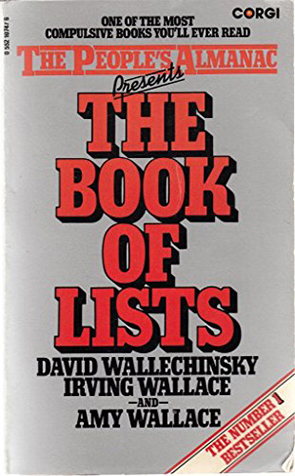
19 December 2022
Twenty Years of Christmas Number Ones
When I was in high school The Book of Lists by David Wallechinsky, Amy Wallace and Irving Wallace was a favourite amongst me and my friends. There were two volumes. They were the type of book you could take camping and ask each other questions about weird topics, and then be surprised by the answers. I still have the two books to this day.
Which explains, in part, why I like lists. They offer an easy, if not necessarily accurate impression of a topic, and they can be fun. A list of the number one selling books during Christmas for the past twenty years in Australia appeared in the Sydney Morning Herald two days ago. It had some interesting things to think about, I thought. Here it is:
- 2002: Matthew Flinders’ Cat by Bryce Courtenay
- 2003: Guinness World Records 2004
- 2004: Brother Fish by Bryce Courtenay
- 2005: Whitehorn by Bryce Courtenay
- 2006: Sylvia by Bryce Courtenay
- 2007: The Persimmon Tree by Bryce Courtenay
- 2008: The Tales of Beedle the Bard by J.K. Rowling
- 2009: MasterChef Australia: The Cookbook
- 2010: Last Sacrifice by Richelle Mead
- 2011: Cabin Fever: Diary of a Wimpy Kid 6 by Jeff Kinney
- 2012: Jamie’s 15-Minute Meals by Jamie Oliver
- 2013: Hard Luck: Diary of a Wimpy Kid 8 by Jeff Kinney
- 2014: The Long Haul: Diary of a Wimpy Kid 9 by Jeff Kinney
- 2015: Old School: Diary of a Wimpy Kid 10 by Jeff Kinney
- 2016: Double Down: Diary of a Wimpy Kid 11 by Jeff Kinney
- 2017: 5 Ingredients by Jamie Oliver
- 2018: The Barefoot Investor by Scott Pape
- 2019: Wrecking Ball: Diary of a Wimpy Kid 14 by Jeff Kinney
- 2020: A Promised Land by Barack Obama
- 2021: Apples Never Fall by Liane Moriarty
- 2022: RecipeTin Eats: Dinner by Nagi Maehashi
The list is topped by 7 adult fiction titles in the last twenty years. Five of those titles are by Bryce Courtenay, an Australian writer, originally from South Africa, who was an advertising director before he became an author. He conceived the iconic character, Louie the Fly in 1957, used to promote a brand of fly spray in Australia, Mortein. I remember a classic ad from my childhood. You can click here to see that ad. Despite the company’s announcement in 2011 that Louie the Fly would be retired, Louie still appears in ads on Australian television to this day. YouTube has a compilation of modern Louie the Fly ads you can view by clicking here. Courtenay’s success as a writer can be partly attributed to his marketing savvy. His first and arguably most famous novel was The Power of One. It received a film treatment by John G. Avildsen in 1992. As Courtenay established his writing career he tended to publish a large novel each year just in time to capitalise on the Christmas shopping period, so they tended to be easy Christmas present choices for many people. Courtenay died in 2012.


Bryce Courtenay
Jeff Kinney
The list is also topped by 7 children’s titles. J.K.Rowling’s The Tales of Beedle the Bard in 2008 is not really a surprise, given that the Harry Potter novels had become a publishing phenomenon by that stage and the film adaptations were also highly successful. I imagine that the dominance of Jeff Kinney’s Diary of a Wimpy Kid series will also be of no surprise to those outside Australia. Kinney is an American author and his books were very popular with my sons and their friends when they were younger. To have topped the list 6 years in a nine year stretch, though, is some achievement. Like Courtenay, Kinney’s books also made easy presents.
The appearance of the Guinness Book of Records on the list in 2003 is not really a surprise to me. However, the Guinness Book of Records 2023 remains on this year’s list of top 10 sellers (not reproduced here), despite the ease with which I thought the Internet may now have supplanted the print publication’s popularity.
The only writer to still appear in this year’s top ten who appears in the list of Number Ones prior to 2022 is Jamie Oliver with his book One.
I hope everyone has a happy and peaceful holiday season. We’re hoping to get a couple of new special reading projects going next year for this website, as well as continue to review books we read.
- bikerbuddy


